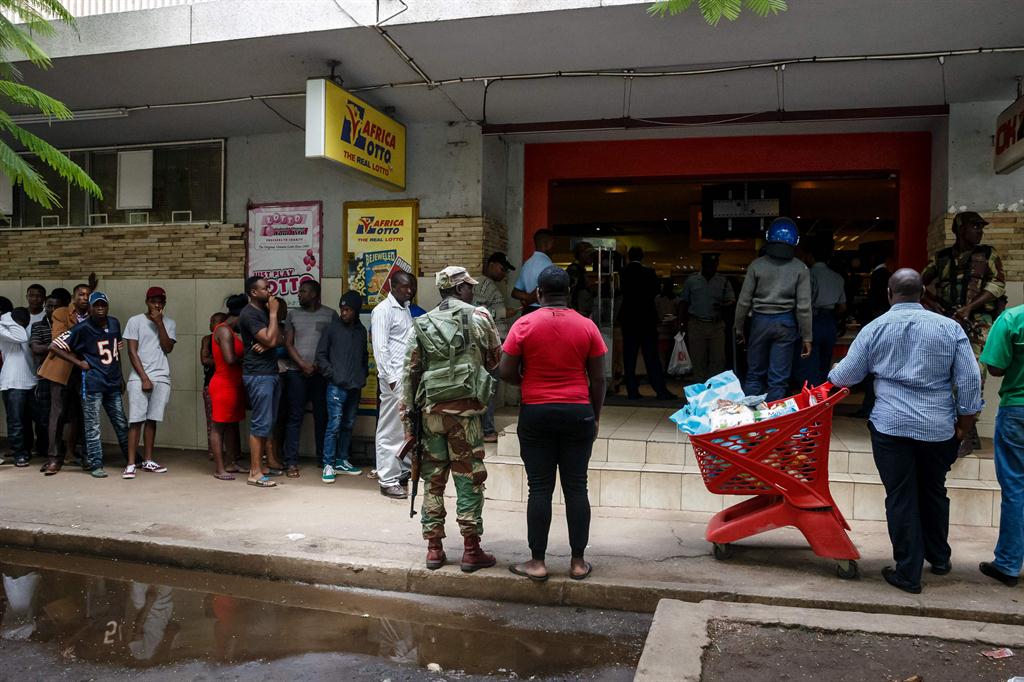Coronavirus hits South Africa jobless data in Q2
The latter figures come from an expanded definition of unemployment, people who are employable but have stopped looking for work.
Official unemployment in South Africa fell to 23.3 percent of the workforce between April and June, according to survey results published on Tuesday, though the actual rate was nearly double that.
The jobless rate, according to the official benchmark, fell by 6.8 percentage points from 30.1 percent in January-March, to its lowest rate in 11 years, the national statistics agency said.
However, the actual rate of unemployment rose to 42 percent of the workforce from 39.7 percent as the impact of coronavirus began to bite, according to a wider definition.
The latter figures come from an expanded definition of unemployment, people who are employable but have stopped looking for work, Statistics South Africa said.
The expanded definition of unemployment is different from that used to calculate the official unemployment rate, which is determined by the number of people actively seeking work.
"It would be much more accurate to consider the expanded definition for the unemployment rate - measured at 42 percent," Lullu Krugel, chief economist at PricewaterhouseCoopers (PWC) Africa Strategy said.
"This calculation includes jobless people that have valid reasons for not searching for employment."
South Africa imposed a strict lockdown on March 27, since progressively eased, to help curb the spread of Covid-19, but at the cost of braking economic activity and pushing the country deeper into recession.
The number of people with jobs fell by 2.2 million during the second quarter, the national statistics office said.
Economic recovery
If the economy recovers a bit in the second half of 2020, PwC still expects a net loss of 1.5 million jobs by year-end, Krugel said. All 10 major sectors tracked by the statistics agency shed jobs during the second quarter.
"More concerning are the levels of youth unemployment," economic analyst Koshiek Karan told AFP, pointing out that the percentage of people aged 15-34 who are not in employment or training was now at 44.7 percent.
"In the absence of any structural reform, determined leadership and urgent intervention, South Africa continues to drift towards becoming a textbook case study of a failed state," Karan warned.
South Africa's economy contracted by more than half in the second quarter, an unprecedented decline. – Nampa/AFP
The jobless rate, according to the official benchmark, fell by 6.8 percentage points from 30.1 percent in January-March, to its lowest rate in 11 years, the national statistics agency said.
However, the actual rate of unemployment rose to 42 percent of the workforce from 39.7 percent as the impact of coronavirus began to bite, according to a wider definition.
The latter figures come from an expanded definition of unemployment, people who are employable but have stopped looking for work, Statistics South Africa said.
The expanded definition of unemployment is different from that used to calculate the official unemployment rate, which is determined by the number of people actively seeking work.
"It would be much more accurate to consider the expanded definition for the unemployment rate - measured at 42 percent," Lullu Krugel, chief economist at PricewaterhouseCoopers (PWC) Africa Strategy said.
"This calculation includes jobless people that have valid reasons for not searching for employment."
South Africa imposed a strict lockdown on March 27, since progressively eased, to help curb the spread of Covid-19, but at the cost of braking economic activity and pushing the country deeper into recession.
The number of people with jobs fell by 2.2 million during the second quarter, the national statistics office said.
Economic recovery
If the economy recovers a bit in the second half of 2020, PwC still expects a net loss of 1.5 million jobs by year-end, Krugel said. All 10 major sectors tracked by the statistics agency shed jobs during the second quarter.
"More concerning are the levels of youth unemployment," economic analyst Koshiek Karan told AFP, pointing out that the percentage of people aged 15-34 who are not in employment or training was now at 44.7 percent.
"In the absence of any structural reform, determined leadership and urgent intervention, South Africa continues to drift towards becoming a textbook case study of a failed state," Karan warned.
South Africa's economy contracted by more than half in the second quarter, an unprecedented decline. – Nampa/AFP




Kommentaar
Republikein
Geen kommentaar is op hierdie artikel gelaat nie